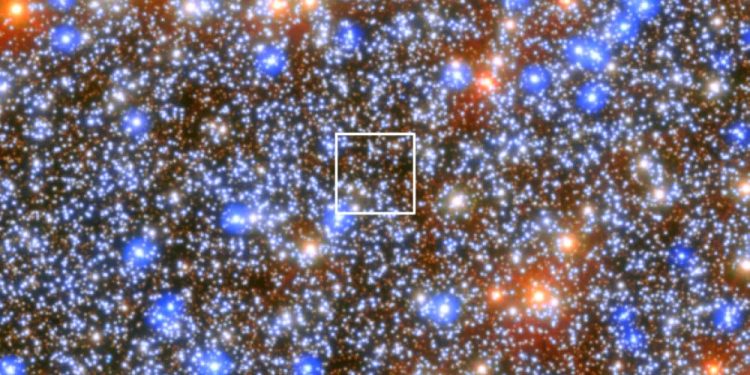PA Media- Fast-moving stars seen in a nearby star cluster within the Milky Way suggest the presence of an elusive black hole which may be the closest one to Earth, researchers say.
The star cluster, Omega Centauri, is a collection of around 10 million stars, visible as a smudge in the night sky south of the Equator.
It looks no different to similar clusters through a small telescope, but the new study confirms what astronomers had been suspecting for some time – it contains a central black hole.
The black hole, which is at a distance of about 18,000 light-years, appears to be stuck in an intermediate stage of evolution, and is considerably less massive than typical black holes in the centres of galaxies.
Researchers say the finding appears to be the missing link between stellar and supermassive black holes.
Black holes have been observed in various sizes, including stellar-mass black holes with masses around five to 150 times that of the Sun, to supermassive black holes which are more than 100,000 times the mass of the Sun.
However, only a few intermediate-mass black holes, between 150 and 100,000 times the mass of the Sun, have been discovered.
Omega Centauri seems to be the core of a small, separate galaxy whose evolution was cut short when the Milky Way swallowed it, the study suggests.
Dr Nadine Neumayer, a group leader at the Max Planck Institute for Astronomy in Germany, said: “Previous studies had prompted critical questions of ‘So where are the high-speed stars?’
“We now have an answer to that and the confirmation that Omega Centauri contains an intermediate-mass black hole.
“At a distance of about 18,000 light-years, this is the closest known example of a massive black hole.”
The supermassive black hole in the centre of the Milky Way is at a distance of about 27,000 light-years.
The study, led by Maximilian Haberle of the Max Planck Institute for Astronomy, is based on more than 20 years of Hubble Space Telescope observations, and published in the Nature journal.
Writing in an accompanying article, Daryl Haggard and Adrienne Cool said: “These newly discovered stars offer the best evidence yet that Alpha Centauri harbours an intermediate-mass black hole.”
The results could suggest that searching for intermediate-mass black holes in other globular clusters may be warranted.
PA Media




















